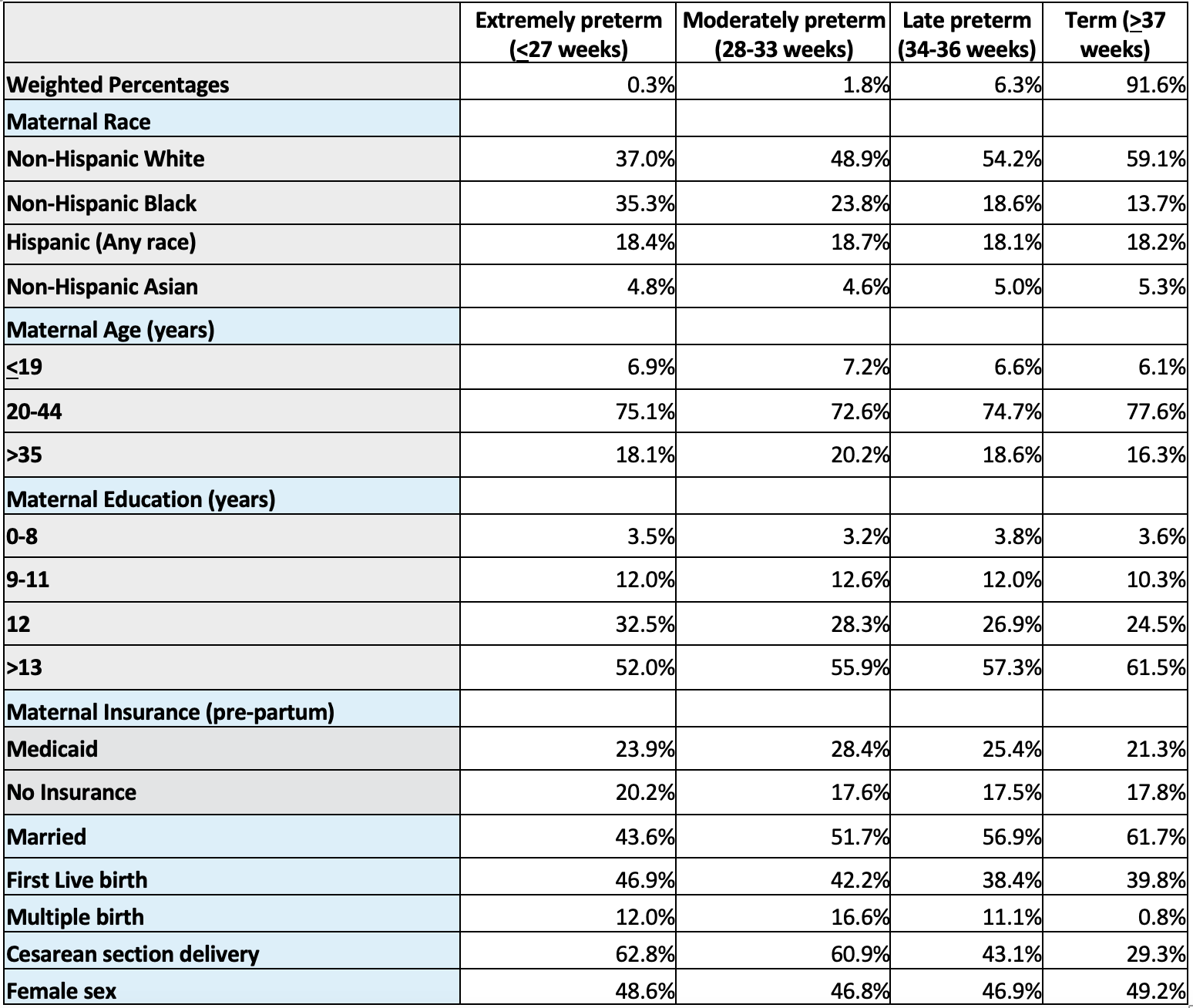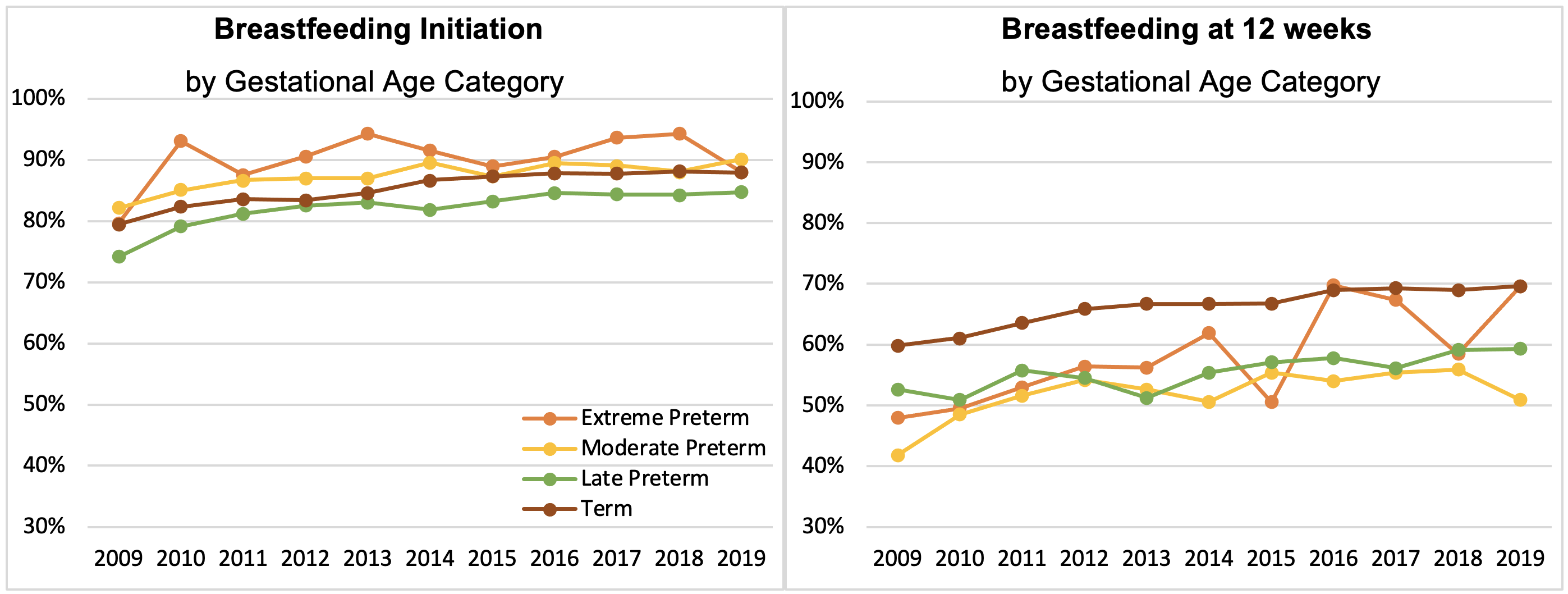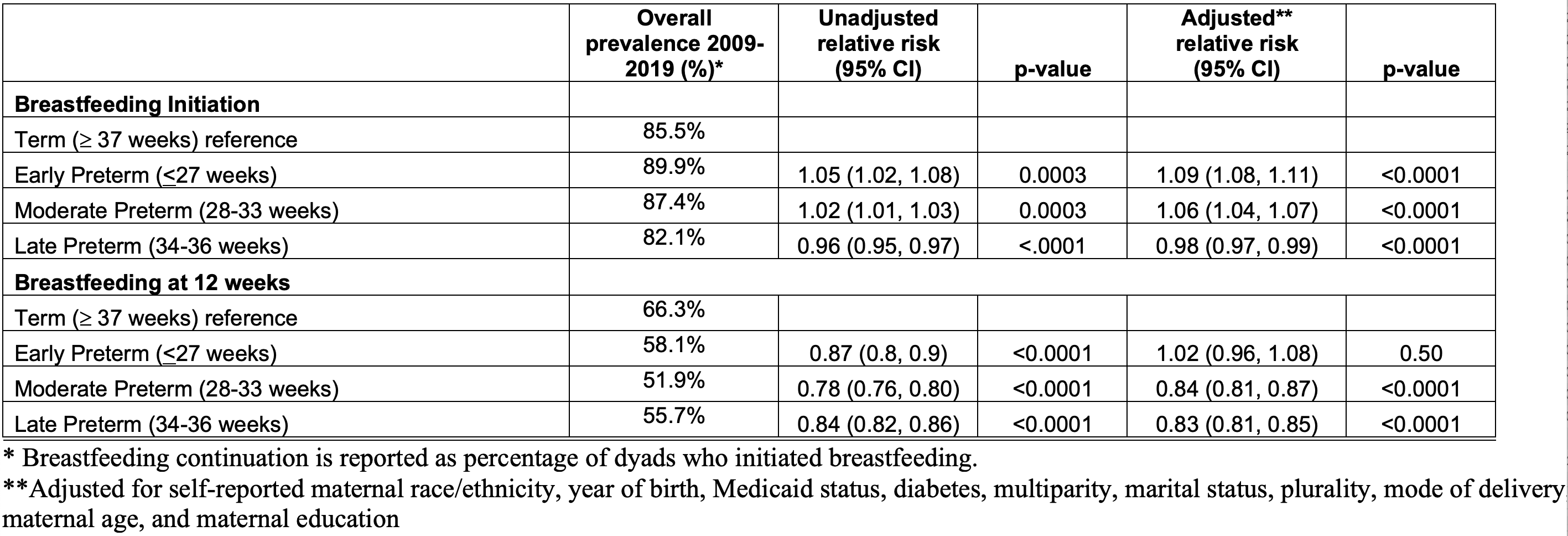Breastfeeding/Human Milk
Session: Breastfeeding/Human Milk 1: Breastfeeding
468 - National Trends in Breastfeeding by Gestational Age Category
Sunday, May 5, 2024
3:30 PM - 6:00 PM ET
Poster Number: 468
Publication Number: 468.1889
Publication Number: 468.1889

Nikita S. Kalluri, MD (she/her/hers)
Neonatal-PerinatalMedicine Fellow
Boston Children's Hospital
Boston, Massachusetts, United States
Presenting Author(s)
Background: Mother’s milk is the optimal preterm infant nutrition source and supporting mothers to provide milk for a preterm infant differs from that of a term infant. National breastfeeding trends have been reported widely among term infants, but trends by gestational age (GA) among preterm infants are unclear.
Objective: 1) Examine national prevalence and trends of breastfeeding initiation and continuation at 12 weeks after birth from 2009 – 2019 by gestational age category (extremely preterm [EPT] < 27 weeks, moderately preterm [MPT] 28-33 weeks, late preterm [LPT] 34-36 weeks, term >37 weeks);
2) Examine associations of gestational age and breastfeeding initiation and continuation at 12 weeks.
Design/Methods: This is a population-based retrospective, cross-sectional study of data from the nationally representative CDC Pregnancy Risk Assessment Monitoring System from 2009-2019. We include 18,673,601 (weighted) mother-infant dyads with completed surveys >12 weeks postpartum. Our primary predictor was gestational age from birth certificate data. Breastfeeding initiation was obtained by answer of “any breastfeeding” (yes/no) and continuation at 12 weeks was assessed as current breastfeeding at >12 weeks (yes/no). We report rates by year and, to assess trends over time, we created a logistic regression model with survey year as a continuous variable. We used multivariable logistic regression to analyze associations of GA category and breastfeeding outcomes, adjusting for birth year, self-reported maternal race/ethnicity, Medicaid status, diabetes, parity, plurality, delivery mode, age, education, and marital status.
Results: Breastfeeding initiation & continuation at 12 weeks increased significantly among all GA groups from 2009 to 2019 (Figure 1; p<.001) except for initiation in the EPT group (p=0.2). In fully adjusted models, mothers of EPT infants had highest breastfeeding initiation (aRR 1.09), followed by MPT (aRR 1.06) and LPT (aRR 0.98) compared to term (p= < 0.01). However, there is a large drop-off in breastfeeding continuation at 12 weeks, with MPT (aRR 0.84) and LPT (aRR 0.83) mothers having lower continuation compared to term (p <.001; Table 1).
Conclusion(s): Breastfeeding initiation and continuation were lowest among LPT infants compared to other GA categories, representing an urgent need for intervention, considering that LPTs make up the vast majority of preterm infants. Mothers of EPT and MPT infants were more likely to initiate breastfeeding but less likely to continue at 12 weeks compared to term, suggesting a need for tailored interventions to prevent early cessation of milk expression in these groups.



